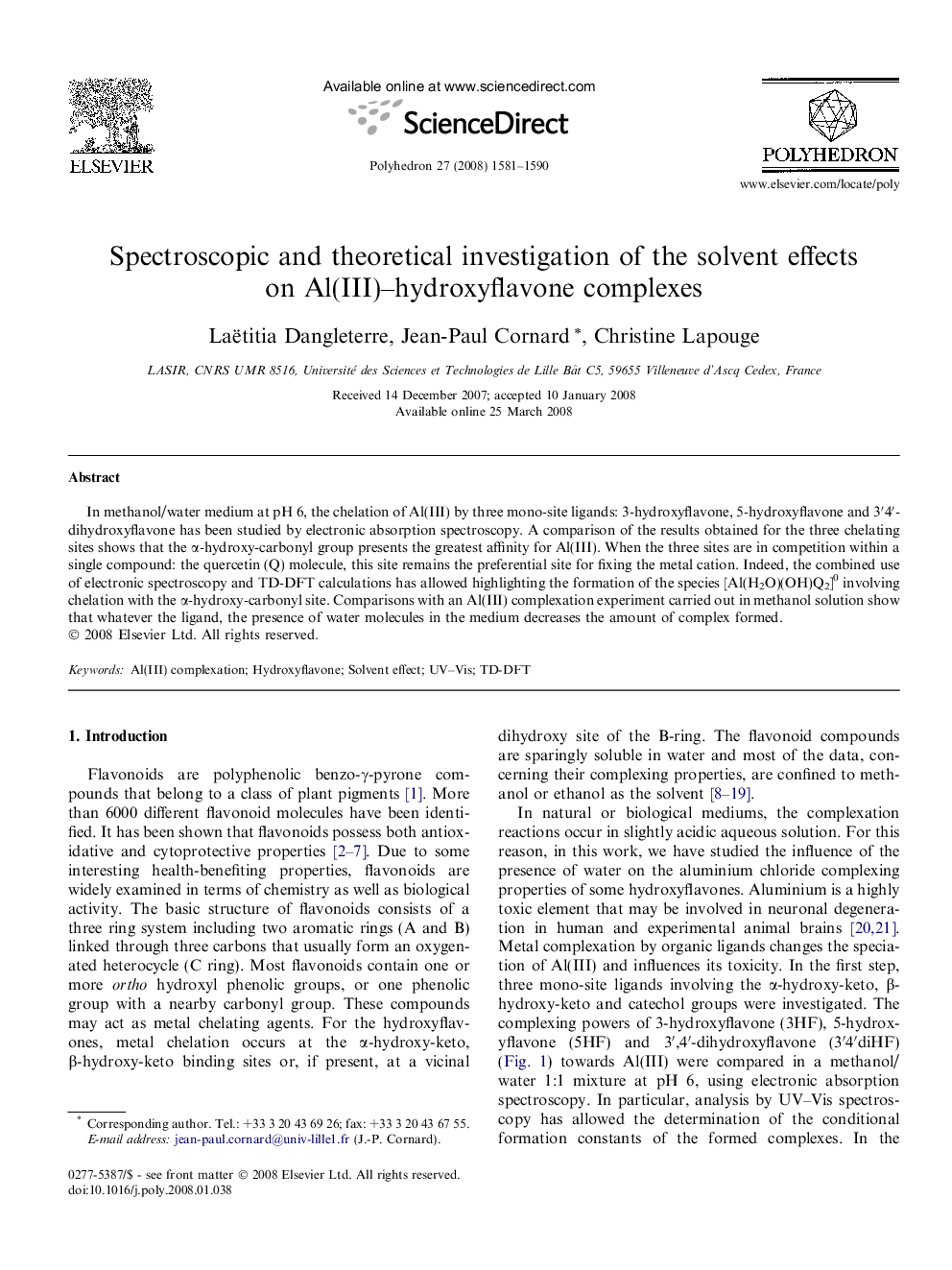| Article ID | Journal | Published Year | Pages | File Type |
|---|---|---|---|---|
| 1340464 | Polyhedron | 2008 | 10 Pages |
In methanol/water medium at pH 6, the chelation of Al(III) by three mono-site ligands: 3-hydroxyflavone, 5-hydroxyflavone and 3′4′-dihydroxyflavone has been studied by electronic absorption spectroscopy. A comparison of the results obtained for the three chelating sites shows that the α-hydroxy-carbonyl group presents the greatest affinity for Al(III). When the three sites are in competition within a single compound: the quercetin (Q) molecule, this site remains the preferential site for fixing the metal cation. Indeed, the combined use of electronic spectroscopy and TD-DFT calculations has allowed highlighting the formation of the species [Al(H2O)(OH)Q2]0 involving chelation with the α-hydroxy-carbonyl site. Comparisons with an Al(III) complexation experiment carried out in methanol solution show that whatever the ligand, the presence of water molecules in the medium decreases the amount of complex formed.
Graphical abstractThe complexation of Al(III) with some hydroxyflavones has been studied in methanol/water solution at pH 6. TD-DFT calculations have allowed the determination of the chelating site.Figure optionsDownload full-size imageDownload as PowerPoint slide
